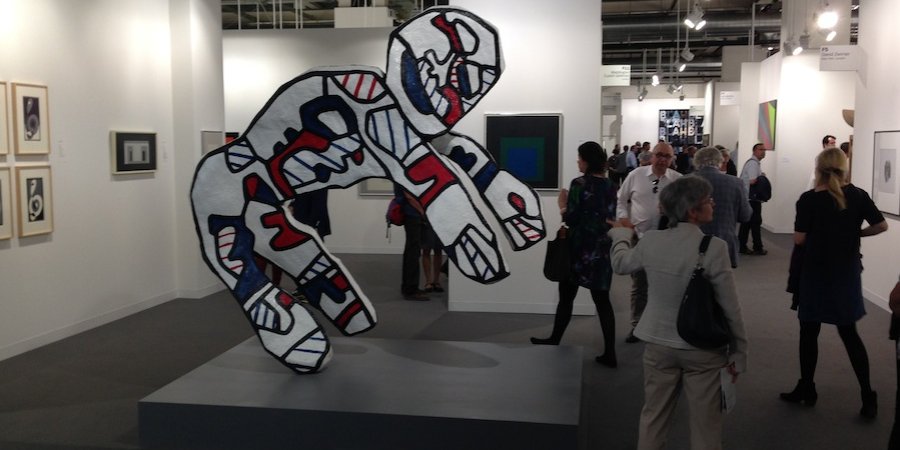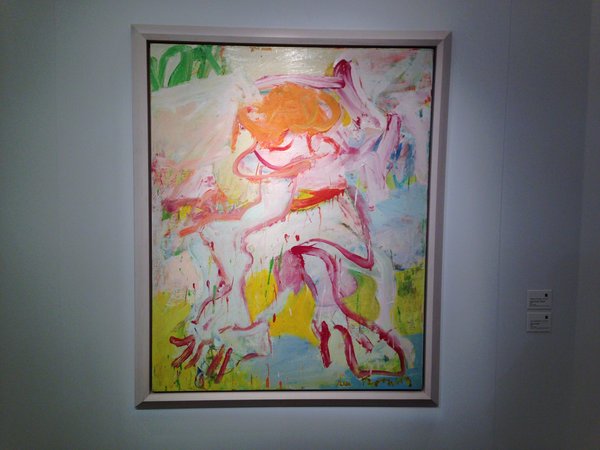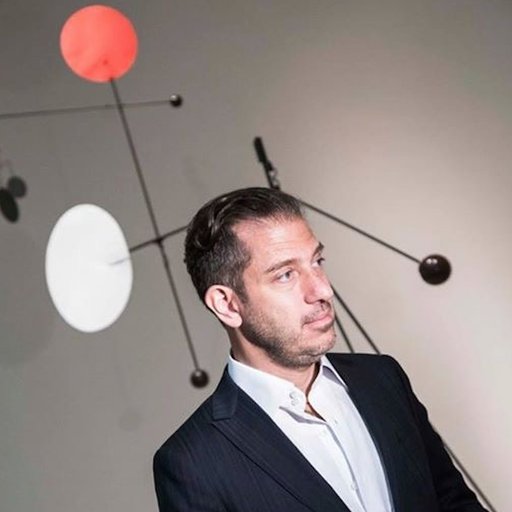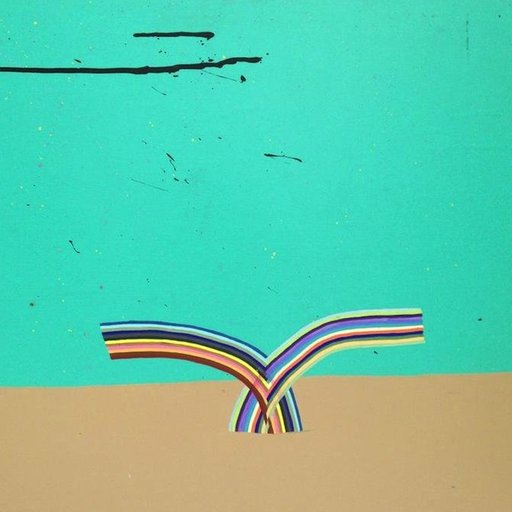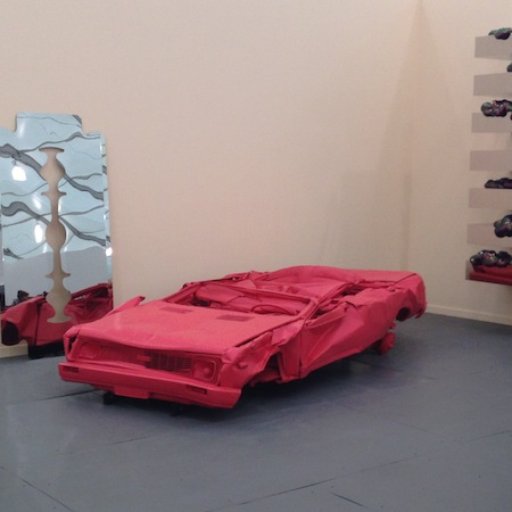With an overwhelming array of booths by top international galleries filling two full floors, Art Basel presents so much first-rate art that it's hard to believe such visual splendor is only on view for a few days every June, to be immediately dispersed onto the walls of collectors around the globe. We toured the fair to tease out 15 particularly exciting pieces that we wish we could look at all year round (preferably in the cozy privacy of our own home).
WILLEM DE KOONING
Woman (Arthur's Woman) (1969)
Edward Tyler Nahem Gallery
$15 million
Arguably de Kooning's most famous body of work, the fierce yet sensuous "Woman" series forges a masterful interplay between abstraction and figuration—and, bona fide museum pieces, these paintings are extraordinarily rare to find in private hands. That's part of the reason this canvas is so impressive, and it's also from a great year, 1969, which is when the artist was fully settled into his new life in the Springs and was drawing inspiration from the area's pastoral beauty, evoked by the verdant greens and watery blues here. Bought directly from the artist by a friend of de Kooning's in 1970, this piece remained in that private collection for four decades. “Flesh was the reason oil paint was invented," de Kooning once said, and the luscious pinks here recall the overabundant fleshiness of Reubens.
MICHAEL WILLIAMS
Deserted Medieval Village (2014)
Eva Presenhuber Gallery
$50,000
Now with a solo show at Eva Presenhuber's Zürich gallery, the rising star Michael Williams strikes a note of painterly nonchalance that is more in line with Liste than the buttoned-up main fair, and it's all the more welcome because of it. This sizable piece, depicting a smoking break outside a DMV, is the result of a new process in which the artist creates drawings in Photoshop—which he likes for its unceremonious quality, and the ability to easily delete layers—and then prints them onto canvas. The title comes from the search results that pop up if you Google "DMV" in Europe, since they don't have them here.
LAURA LIMA
To Hold (2014)
A Gentil Carioca
$20,000
Also featured in Klaus Biesenbach and Hans Ulrich Obrist's excellent "14 Rooms" show, Laura Lima has been working with the human body as a medium since the 1990s. This piece at A Gentil Carioca may be the only performative piece in the main fair itself (at least as far as this writer could find), with a revolving cast of men and women sticking their hands through the wall to hold a wrapped canvas. The lucky collector who purchases the piece has the option of having the performer hold any object desired.
ANDY WARHOL
Untitled (Mylar Sculpture) (1969/70)
Daniel Blau Gallery
$2 million
Cory Arcangel's must-read essay on Warhol's Atari drawings has brought attention to the Pop pioneer's experiments with technology, and this rivetingly unexpected Warhol installation was made during that same period, when he unveiled his famous Daisy Waterfall (Rain Machine) at the Expo '79 Osaka. Bought from the Andy Warhol Foundation 15 years ago by Daniel Blau, these rolls of colored mylar both emerge from Warhol's studio antics—the Factory was wallpapered in silver mylar—and presage the vitrine-based works of Damien Hirst and Jeff Koons.
HENRI CHOPIN
Frisures Pour un Gratte-Ciel (1989)
Supportico Lopez
€8,000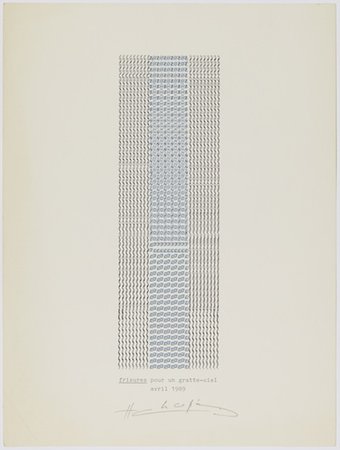
A Parisian concrete poet who passed away in 2008, Henri Chopin was unusually enamored of his typewriters—he always traveled with three of them, and he slept with one at night. (Computers he abhorred.) Looking at the extraordinary mini-survey of his work at Supportico Lopez, one can only be grateful for his fixation: each piece is a drawing created out of repeated typographic symbols, clustered together and sometimes embellished with colored pencil to form witty compositions. The title of this one translates roughly as the "Frizzy Hair of a Skyscraper."
TABOR ROBAK
Analphabetic Aquarium (2014)
Team Gallery
$15,000 (not including hardware costs)
Currently included in the Swiss Institute's "St. Petersburg Paradox" group show, where his large-scale video takes Tetris to terrifying new terrain, the 28-year-old artist Tabor Robak has been marked as a rising star for his multi-channel videos mining the aesthetics of video games, from cellphone addictions like Candy Crush to first-person shooters. Having started out making interactive video games that the viewer was encouraged to explore, Robak has now begun coding video games—embellished with CGI animations, hand-rendered images, and purchased icons—that play themselves, like this fish-tank fantasia that over a 15-minute loop morphs into a strange twist on Words With Friends. In all of his work, the artist explores the unacknowledged fact that the digital spaces we have created constitute a new, discrete reality.
BERYL KOROT
Dachau 1974 (1974)
bitforms gallery
$175,000
After moving to Berlin in the 1970s, Beryl Korot—a multi-channel video artist who had edited the avant-garde magazine Radical Software—felt that as a young Jewish American she needed to visit a concentration camp to understand how the Holocaust, still so recent an atrocity, was being regarded in the country. Coming to Dachau, she was shocked to find that it had already become a tourist attraction, where weekenders walked around as if visiting Pompeii. This film was her reaction to the experience, a video in four channels that she filmed to show the way that tourists moved through the camp architecture—but instead of simply documenting the site, Korot structured her video according to the threads on a loom, programming the footage to appear so that the first and third screens show one nearly identical shot while the second and fourth show another, according to the most basic stitching pattern.
The film is considered a classic of the medium, with its structural commentary on how the loom (with its punch-card) was the precursor to the computer as a method of encrypting information into technology. The Kramliches own one edition of the video, which is currently being displayed at the Tate, and a collector in Chicago owns another; this is the last edition on the market, and the gallery was hoping to place it with a German museum.
JOSEPHINE HALVORSON
Blue Door (Facing Inside) (2014)
Sikkema Jenkins & Co.
$45,000
Josephine Halvorson likes to paint her trompe l'oeil portraits of objects in a single sitting, traveling to places that hold significance for her and communing with the object in question. At once exquisitely realistic and surreal—they recall the paintings of Domenico Gnoli—Halvorson's canvases also become opportunities for her to explore abstraction, with the artist viewing each part of the composition as equally important. Lately Halvorson has been painting objects in her house in upstate New York, and this brand-new portrait of a door has a nicely countrified feel.
FABIO VIALE
Souvenir David (2014)
Sperone Westwater
€55,000
An Italian artist working in the tradition of classical marble sculpting, Fabio Viale—at 38, one of the younger members of the Sperone Westwater roster—drew critical acclaim for his contribution's to the gallery's dynamite 2012 marble show. It's no surprise—he's a wizard with the material, able to sculpt everyday objects like fruit crates, interlocking tires, and skiffs with absolute fidelity. (The boat even worked, and there are photos of the artist piloting through a lake with an outboard motor.) Each time he introduces a twist into his work, and here he recreated the stone-holding arm of Michelangelo's David but covered it in Russian prison tattoos. At the fair, a client asked for a translation, and the gallery found that the slogans ("steal only from those who have stolen") and symbols (the letters "BOP") are the official markings of a thief.
WAEL SHAWKY
Assorted Drawings
Sfeir-Semler Gallery
€6,000
The Egyptian artist Wael Shawky is renowned for his ravishingly atmospheric videos that he creates with marionettes to retell the story of the Crusades from an Arab point of view. At first he found the puppets in antiques stores, now he has them designed to his specifications (ones on view at the fair are half human, half dromedary) based on drawings. These drawings, it should be said, are spectacular, and can induce a bout of cupidity in even the most jaded art journalist. With a growing reputation based on memorable shows at MoMA and the Sharjah Biennial, Shawky is primed to be the star of the New Museum's upcoming show of art from the Middle East.
ROBERT GOBER
Untitled (1996)
Anthony Meier Fine Arts
$45,000
One of the most unexpected treasures of the Basel art scene is the Schaulager, a private museum on the outskirts of town located in an art storage facility designed by Herzog & de Meuron. Right now there's a terrific Paul Chan survey on view, but the highlight of the museum is a room-filling permanent installation in the basement by Robert Gober: a waterfall cascades down a staircase in one wall, coursing under the floor as a subterranean stream that can be viewed through a gate under the feet of a Virgin Mary with a pipe impaled through her stomach; on either side of the room are two open steamer trunks on the floor that reveal other grates with views of this underground stream, where a figure holding a baby can be glimpsed. It's very weird, utterly unforgettable, and this tiny maquette for the steamer trunk sculptures was the star of Anthony Meier Fine Arts' booth, despite the walls being lined with Richters.
SHAO FAN
Portrait (2013)
Galerie Urs Meile
€140,000
The Beijing-based artist Shao Fan is smitten with rabbits, keeping a clutch of them in his backyard where they roam about and frolic under his loving gaze. He is also enamored of classical oil painting, seeing the now-unfashionable reputation of the technique as the epitome of a difference between the West and China, in which the former views the old as unappealing and the latter sees it as being suffused with wisdom and beauty. The artist unites these two interests in his oddly imposing rabbit portraits, symmetrical depictions of his furry friends that present them as ancient sages.
JEAN DUBUFFET
Le Facétieux (After Maquette Dated 20 May-December 1973) (1973-2014)
Waddington Custot Galleries
$1.5 million
In the 1970s, the architect I.M. Pei commissioned a majestic "Welcome Parade" of sculptures from Jean Dubuffet to grace his National Gallery of Art in Washington, D.C. The project was never completed, as other large-scale commissions got in the way, but the artist created a series of maquettes of creatures from his performance-cum-spectacle Coucou Bazaar, and he left directions that these sculptures should be realized in their full state posthumously. The fabricator Richard Dhoedt of Art et Volumes, who worked on the project during Dubuffet's life, created three over the years, and this fourth piece—in the Art Brut pioneer's signature red, white, and blue colors and hatching, which he employed to simplify his sculptures to their most basic form—was just completed this year.
JACK LAVENDER
Now and Then It Comes Back (2014)
The Approach
£7,000
Only two years out of London's Royal Collect of Art, Jack Lavender has garnered attention from collectors of emergent art for his sculptural assemblages that he builds out of the detritus of the teenage—bedroom posters, soda cans, stickers, and other pop-culture ephemera. In this newest body of work, the artist has taken a more painterly tack, using peculiar and certainly proprietary process: welding two panes of glass into a metal frame, he drills holes in the top and then pokes in a stick with a paint-loaded rag on the end and bashes it around a bit, leaving streaks on the glass; he then pours in some sand, a rolled-up poster or two, and other juvenile tidbits. The results are fun pieces, and all of them sold to private collectors.
JEFF KOONS
Hulk (Wheelbarrow) (2004)
Gagosian
$4 million
It would be remiss not to mention one of the Jeff Koons sculptures scattered across the fair, with galleries taking advantage of the giddy hype surrounding the opening of his retrospective at the Whitney, and the one at Gagosian is squarely in the artist's inimitably weird style. The hulk is made from painted bronze (check out the funny treatment of the hair) and the cart carrying the flowers is made of wood. Why is an inflatable Hulk pool toy with a maniacal grin pushing a wheelbarrow full of flowers? It's the kind of fantasia that could only spring from a suburban middle-American backyard.











